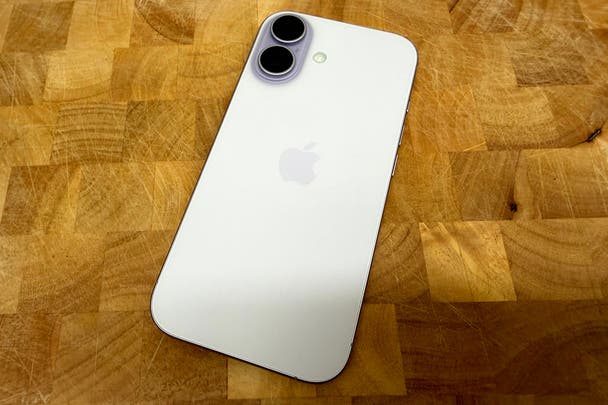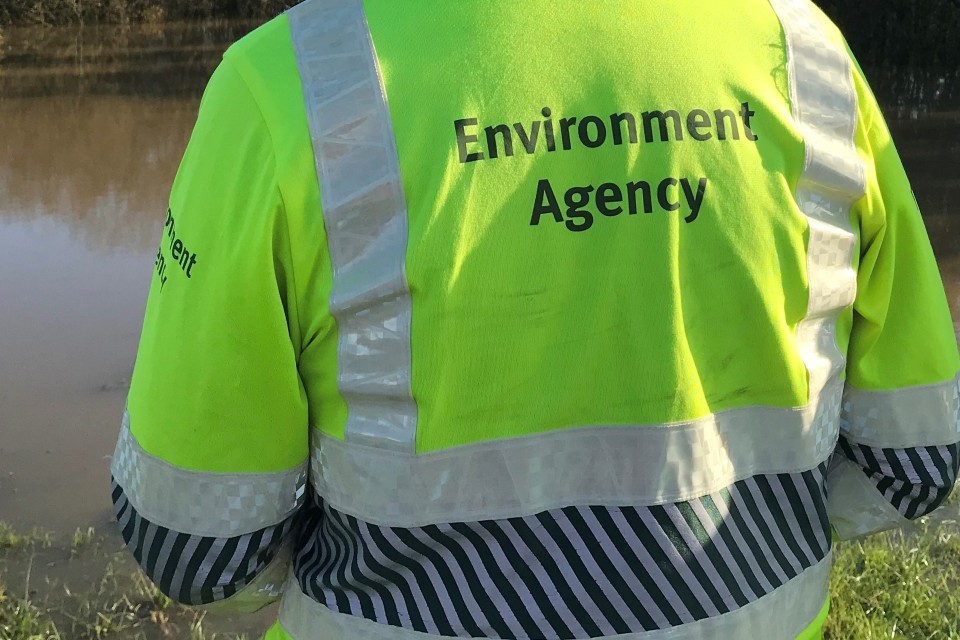Apple iPhone 17: Design and display
The new phone is very similar to last year’s iPhone 16, with a pair of rear cameras sitting in vertical orientation at the top corner. Unlike other models in this year’s release, it hasn’t plumped for a camera panel that runs the width of the phone.
Some of the colours this year are very pale – lavender, mist blue, green and white – but there’s also a black finish available. The effect of the rear of the phone on the lavender model I tested is a pale piece of glass with a matte finish, apart from the camera surround which is gloss and makes the colours pop more.
For the first time, the back of the phone uses Apple’s Ceramic Shield – a bespoke tough material that protects against damage if you drop the iPhone.
On the front of the phone, however, there’s been an upgrade to Ceramic Shield 2, which additionally protects against scratches and has an anti-reflective coating to reduce glare in bright environments, which it does quite effectively.
The big news, however, is that Apple has finally introduced ProMotion – the beautiful screen tech it uses on its iPhone Pros – to the regular iPhone. Since it’s on the iPhone Air as well, it means every new iPhone 2025 release has it.
ProMotion means a display with 120Hz refresh rate, not the 60Hz rate found on every regular iPhone up until now. The faster refresh rate makes for a smooth viewing experience at all times. But because it’s a dynamic refresh rate, it can also go right down to 1Hz, which means it saves battery if you’re viewing stationary content.
It also enables an always-on display, one of the glories of the Pro iPhones. Glance down at the phone in standby and it can show the time, select widgets and the latest notifications.
If your iPhone 17 is in landscape orientation while it’s charging, standby mode kicks into action. It will show up as a clock overnight, for instance. Who needs a dedicated alarm clock?
Apple iPhone 17: Cameras
Two 48MP cameras sit on the back of the iPhone 17. This makes it far and away the most advanced camera on a regular iPhone. A big step up from last year’s model. While it lacks the third camera of the Pro models, the cameras here are very capable and versatile.
The second sensor is a new fusion ultra-wide camera, which means the camera snaps a 48MP shot and combines it with a 12MP one, merging them to create one image that’s 24MP resolution by default. It’s also possible to use the full 48MP in, say, brightly lit environments. This system was on the main sensor already and now comes to both in this latest iPhone.
Apple’s cameras remain among the very best on any smartphone, with the iPhone able to deliver superb results with zero effort. A newly redesigned Camera app doesn’t get in the way of this, and the Camera Control introduced last year continues to be handy, even if most people only use it as a shutter button rather than for its advanced options, such as changing camera or exposure levels.
At the front of the phone is an improved selfie camera, which has an unusual sensor, in that it’s square. The idea is that, if you’re holding the phone upright, it can take a picture as normal but if a landscape shot would be better, one tap of the display switches the part of the sensor it’s using. This means you don’t have to move your phone to adjust the shot – it’s easier to grip when it’s upright and for the subjects of the selfie to look at the camera more easily.

Video continues to be extremely good on the iPhone 17, too, with high-quality features such as 4K60 Dolby Vision, strong stabilisation, thanks to action mode, and audio features such as wind noise reduction.
Apple iPhone 17: Performance and battery life
The Apple A19 chip may not be as powerful as the one found in the iPhone Air and iPhone 17 Pro (which feature the A19 Pro), but it’s still very nippy, meaning everything you do is quick and easy, with no waiting.
What’s more, the battery life has gone up, which is always a crowd-pleaser. Apple has different ways of measuring battery life but it says that, in terms of video playback, where the iPhone 16 managed 22 hours, now you’ve got up to 30 hours. Of course, you won’t be watching video non-stop but the point is it’ll last longer. That was certainly my experience during testing.
For real-life usage, the phone sailed through a full day with charge to spare. It wouldn’t manage two days, but this is a big step forward and chimes with the overall big upgrade of the iPhone 17.





